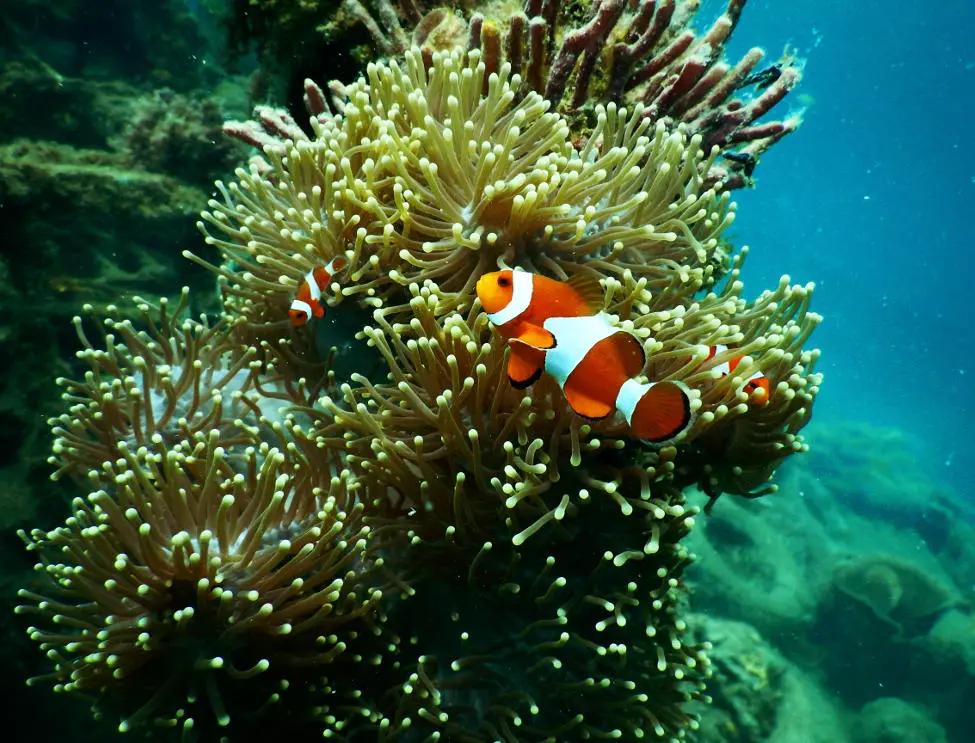What kind of creatures live in Coral Reefs?

A dive or snorkel in clear waters on a coral reef is a dazzling experience. This chaotic environment is full of life. As well as a beautiful display of reef fishes, there are many amazing creatures to discover: wavering anemones, bright sponges, oysters, and shrimps, among others.
Corals and Jellyfishes
Although there are plants on the reef, many of the organisms with plant-like forms are actually animals. Coral themselves are cnidarians, a group that includes anemones and jellyfish. Jellyfish are free-swimming, some species are deadly to humans, while others are harmless or produce just a mild, temporary sting.
Sea anemones
More than a thousand species of sea anemones inhabit Earth’s oceans. They are often brightly coloured and range in size from just a few centimetres to nearly 2m wide. They are related to jellyfish and corals. Some are free-floating but most attach to rocks or coral reefs, where their venomous tentacles wave in the current waiting for passing prey, usually small fish.
Starfish and allies
Echinoderms, such as starfishes, sea urchins and relatives, are a significant part of the reef community. Starfishes, some with 20 arms, spread themselves over their prey, digesting it with inverted stomachs. Sea cucumbers are often found relaxing on the sand.
Molluscs and worms
The giant clam, with its meter-long shell, is a spectacular sight, big individuals can weigh over 200kg. There are thousands of shelled mollusc species, ranging from the dangerously venomous cone shells to the file shells flashing with bioluminescence. Some molluscs have no shells at all. Nudibranchs are usually small, often colourful, slug-like animals. Christmas tree worms are commonly seen on large corals. Most of the animal is concealed within a tunnel, from which it feeds by extending pairs of brightly coloured, modified gills that look like miniature pine trees or the tips of bottlebrushes.
Crustaceans
Crustaceans, such as crabs, rock lobsters, prawns and shrimps, are among the most recognizable invertebrates but most of them keep out of sight. An exception to this is the banded coral shrimp, which waves its long white antennae to attract large fishes. It then clambers over them, removing parasites and old skin. Some shrimps share burrows with small fishes called gobies, the shrimp does the excavation while the sharp-eyed gobies warn of danger.
Reef fishes
Fishes are everywhere on a coral reef. Brightly coloured parrotfishes scrape on algae, anemonefishes weave through the tentacles of their hosts, and the little cleanerfish grooms much larger species, even venturing into gills and mouth to remove parasites.
Other common species are butterflyfishes, angelfishes, lionfishes, and squirrelfishes. Nemo, the clown anemonefish, can be found on Australia’s coral reefs.
Sharks and rays
The biggest fish in the oceans, the whale shark, is seen infrequently on the east coast of Australia. This enormous spotted shark can grow to 12 m but is a harmless plankton eater. A whale shark’s mouth can be 1.5m wide. Some other sharks occur around the reefs, such as reef sharks and hammerhead sharks.
The manta ray, the largest ray in the world, often grows to 4m and can reach 9m across. This magnificent plankton-eater swims gracefully. Stingrays of over 20 species are a more common sight, sometimes lifting off the sand as people approach.